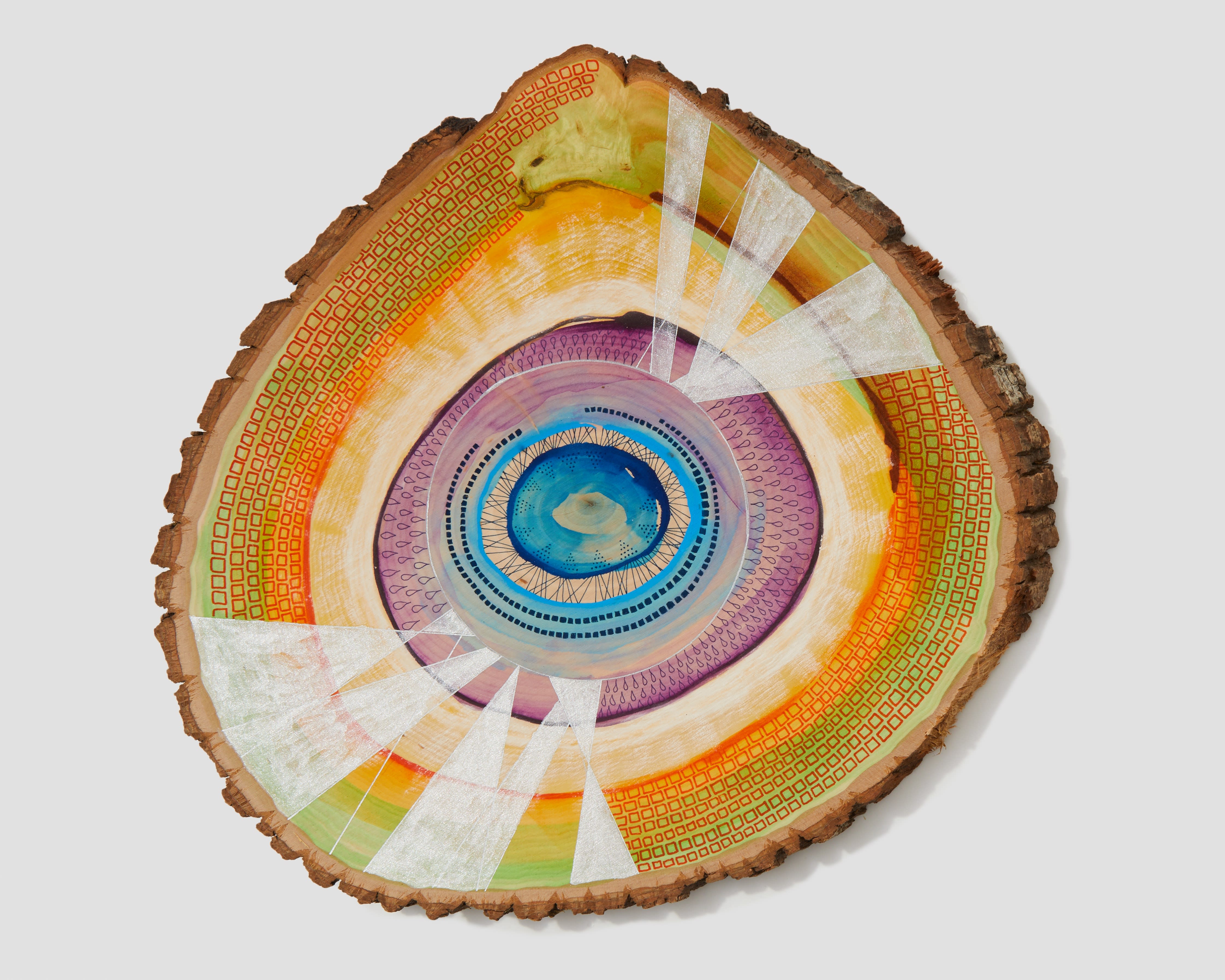
The artist themself, Jacks McNamara.
Spencer Linford: Hi, Jacks. Thank you for agreeing to do this interview. To begin, I'd like to provide a little context as to how we came to work together. As a gallery, form & concept hopes to showcase artists who have historically been underrepresented and who make work that challenges the idea that fine art and artisanship are two separate pursuits. In your studio practice, you combine non-traditional fine art materials, like trees, with traditional visual art practices like painting. Do you consider your practice as part of these contemporary discussions surrounding representation and the ranking of material culture?
Jacks McNamara: I do consider myself part of these conversations. I consider myself an underrepresented artist both in terms of identity – I am queer and trans – and in terms of the unconventional work I’m creating. The basswood tree slices I use as the support for much of my work are traditionally used to create cake stands at weddings or wood-burned signs, not for “fine art” at all. It feels rather delicious to re-purpose them in this way.
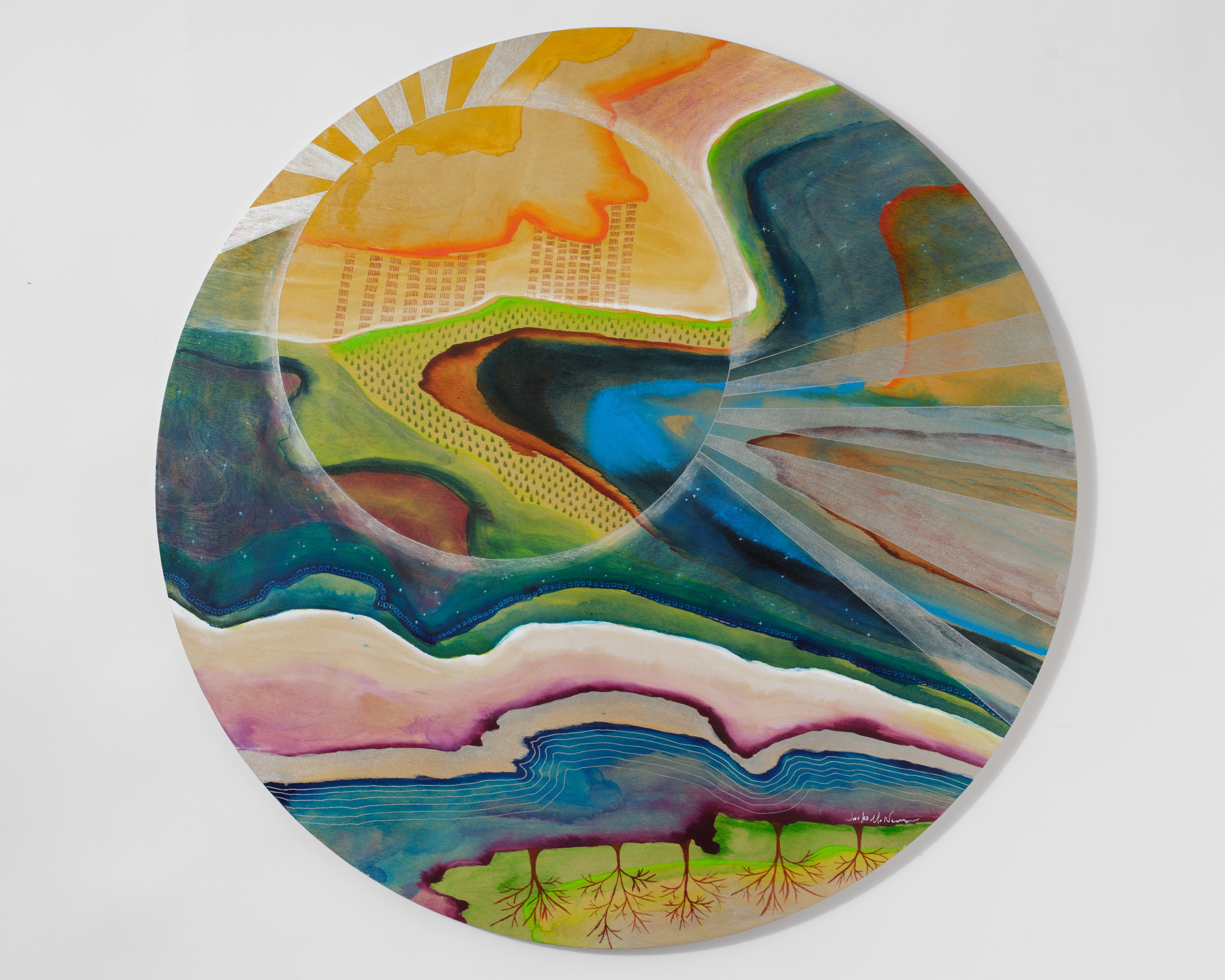
SL: Your latest exhibition at form & concept, The Poetics of Growth, features dozens of your signature paintings on cross sections of trees. Could you explain how you came to paint on wood? Did you experiment with other canvases before? What is it about the materiality of wood that you prefer over other materials?
JM: I arrived at painting on wood as rather an accident — when I was in art school 20+ years ago, I had a painting teacher who took us to the workshop of a man who made wood panels by hand for use as painting supports. The idea was that we would gesso over them and paint on them in acrylics and oils, but once I unwrapped the panels I’d brought home, I found the wood itself so beautiful that I decided to paint on it raw and highlight rather than obscure all its natural features, from rings to knots. One thing led to another, and over the years, I found more and more types of wood to paint on.
I have painted on all the more traditional supports, from gessoed canvas to archival watercolor paper to masonite panels, but once I got hooked on the wood — and beginning with a non-blank “canvas” — I couldn’t go back.
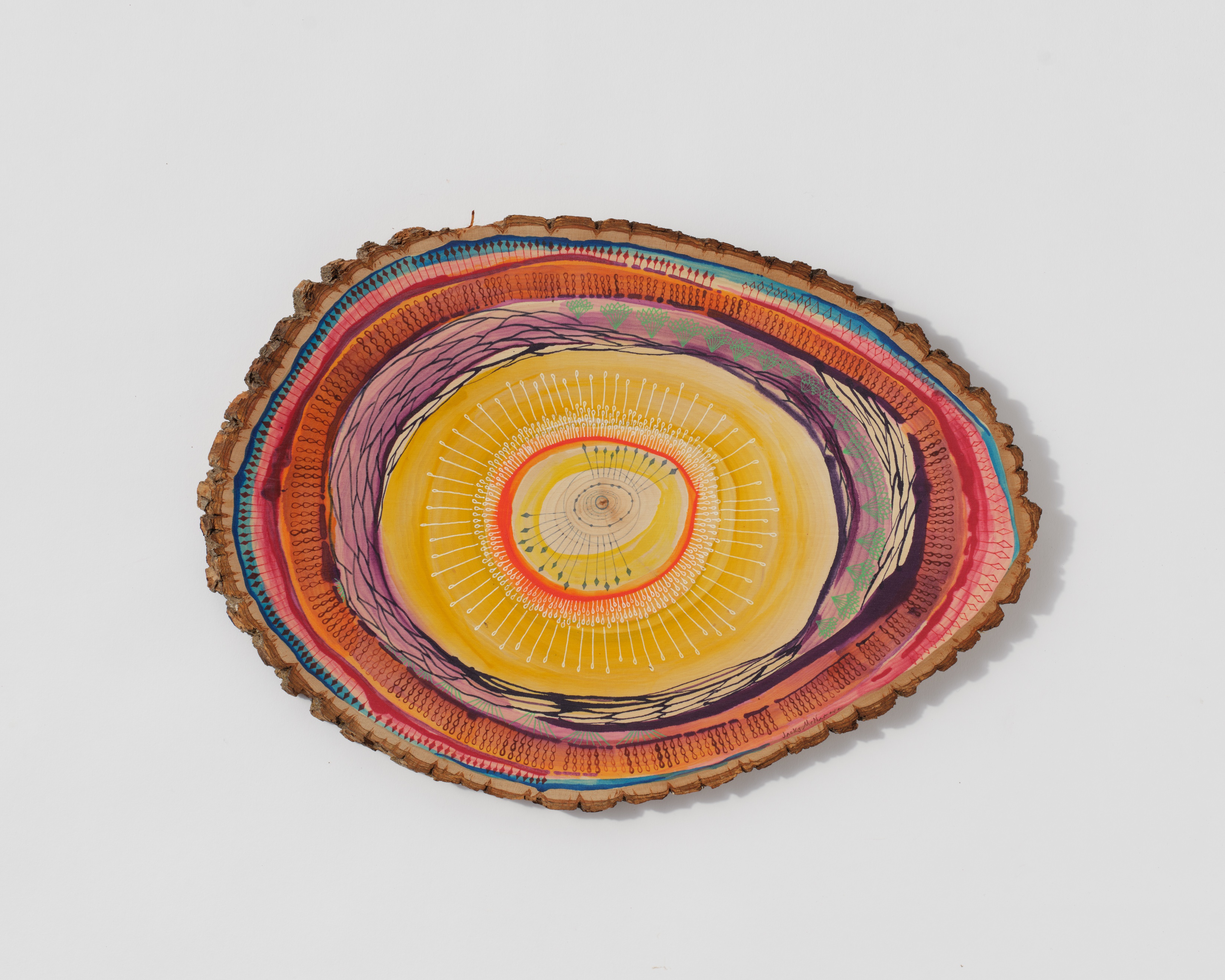
SL: Your work is very much connected to the land, from what you depict — to your inspirations, to your mediums — How do you navigate your relationship to the land? Especially in Santa Fe, which has so much unresolved trauma from its colonial history.
JM: Being a white artist in New Mexico is so complicated. Like so many, I am deeply, deeply moved by the landscapes and the seasons of my adopted home, but I am also ever aware of myself as a settler here who is indigenous to somewhere very different. I don’t want to be part of colonization/gentrification, but it seems inevitable. In my case, there is nowhere to go back to – I have no remaining family in any of the places I’m from. Nowhere is exactly home, so I’m trying to figure out how to have as light an impact as possible while honoring the spiritual legacies of this place.
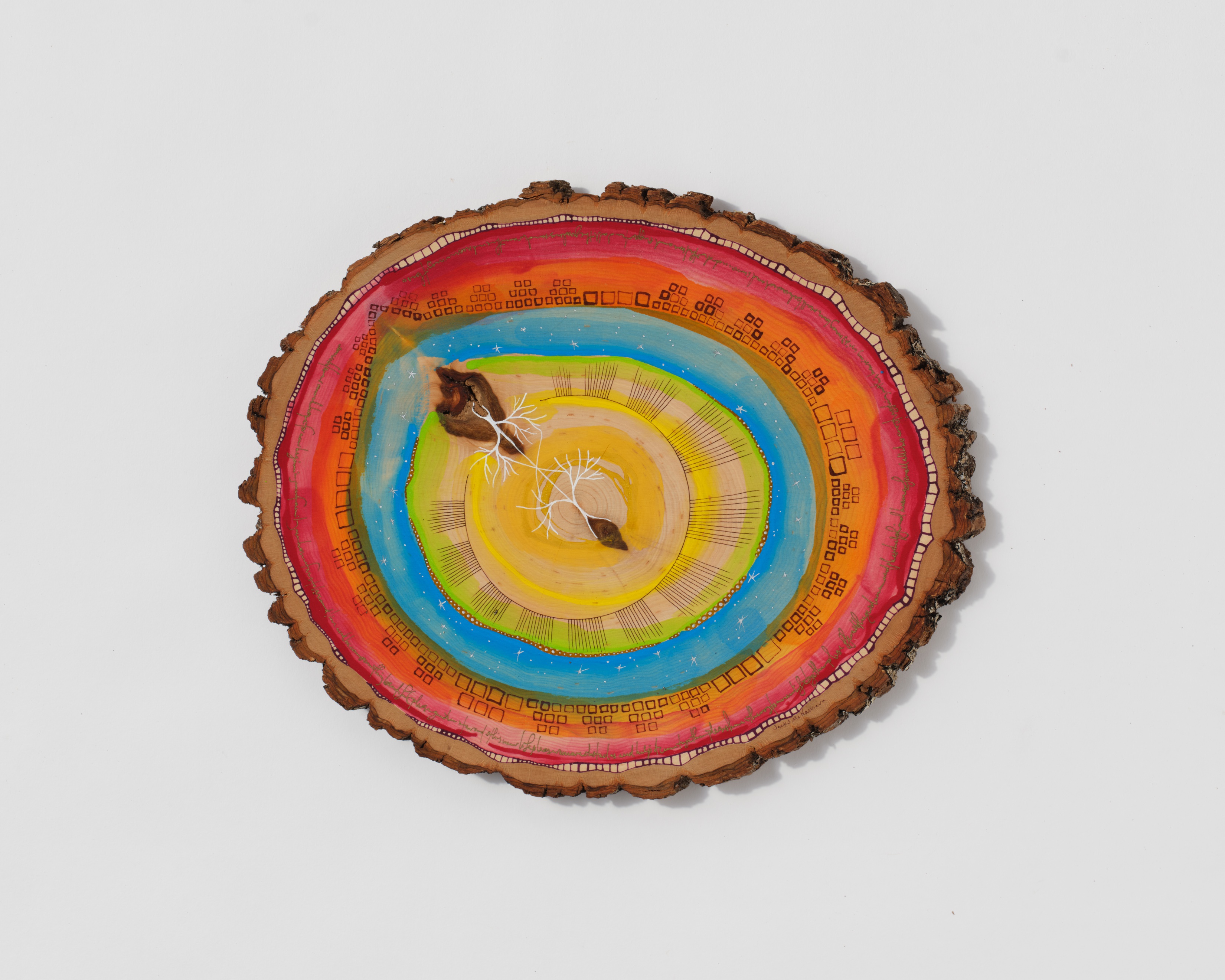
SL: This new series of works features compositional elements—like ink washes that flow like water into one another, as well as meticulous linework— that are somewhat of an evolution in style from your last exhibition with us. Could you share some of what inspired this new direction?
JM: In the wake of my last exhibition, Ancestral Imagination, I found myself drawn to a more abstract visual vocabulary as I embarked on this exhibition. For whatever reason, pattern language was particularly magnetic, and I found myself creating work that relies heavily on iteration and repetition. There’s something soothing about the creation of this detailed, obsessive work, and I find it can be visually stunning. Some of the contemporary artists with whom I am currently enamored, like Teresita Fernández and Cornelia Parker, also rely heavily on obsessive repetition in their work, albeit in very different media.
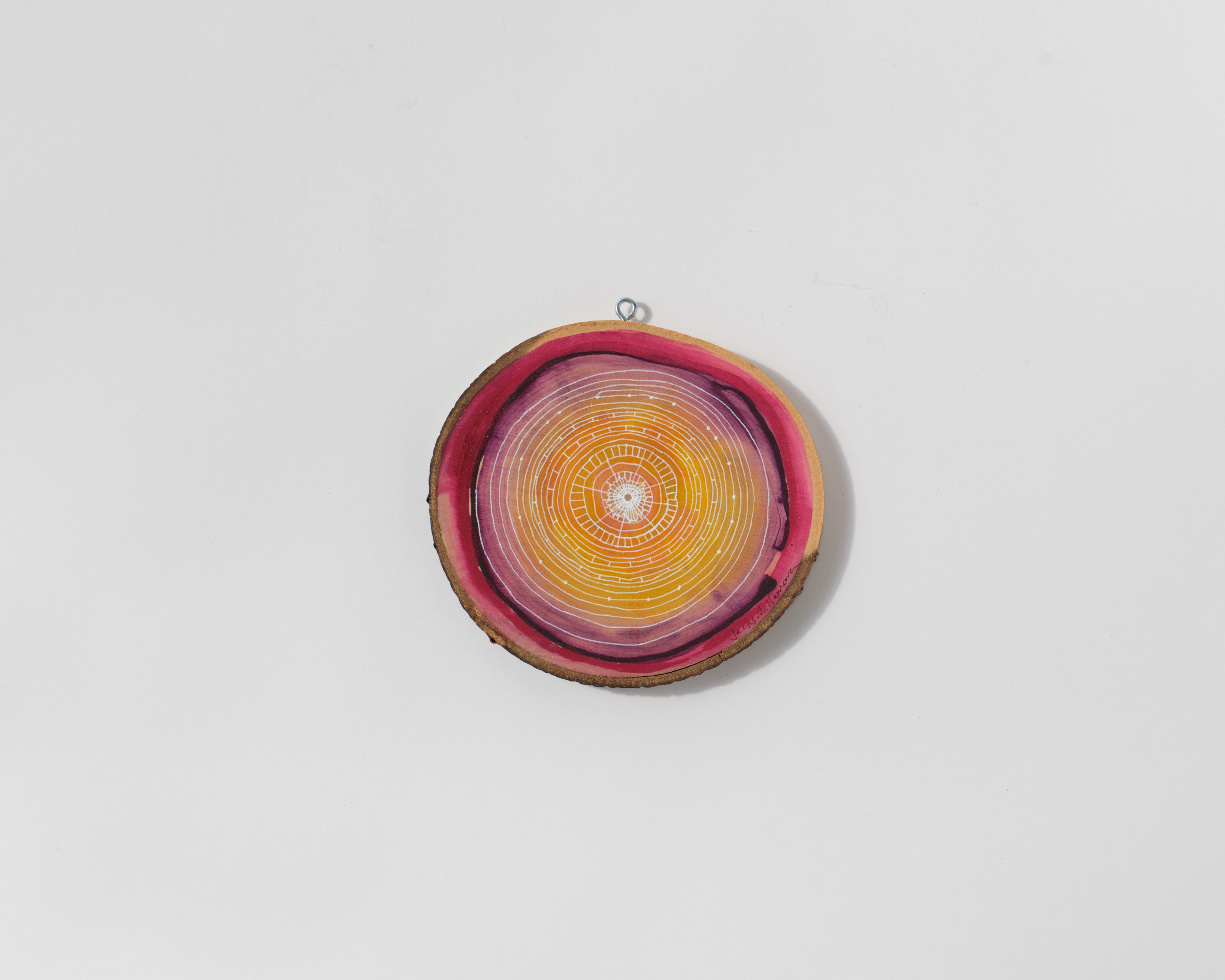
SL: Seasonality is a prominent theme in this most recent body of work, which evokes a sense of cyclical change. Could you speak a little about your relationship to change? How has getting in touch with your cultural roots informed your understanding of change?
JM: Ever since I was a child in Virginia, I have been moved and affected by patterns of seasonal change more than most. From feeling vibrantly alive in May, when all the world is bursting with growth, to feeling low and colorless in January, I have always internalized the rhythms of what is happening around me, and that has inevitably found its way into my work. In the last dozen years or so I’ve become very interested in learning more about the Pagan traditions of Northern Europe, where my ancestors are from, and one of the central ways of structuring time is the Wheel of the Year, which celebrates seasonal turnings like the solstices, equinoxes, and transitions between as essential to human life. These investigations have made their way into my art.

SL: Outside of being an artist, you are a writer, educator, podcaster, and community organizer. What other projects are you working on that people who are interested in your art might not necessarily know about?
JM: My next project is to try to finish a manuscript of poetry that has been kicking around my studio for a few years. I’ve been so focused on the visual art of late that my writing has taken a back seat, but I’m hoping to use the slowing down time of winter this year to resurrect my writing life. I also have another side of my professional life where I am a practitioner of somatics, and currently am focused on offering and developing a number of somatics groups that can help people heal in community, including an offering of Trans Somatics and Somatics for Parents.
